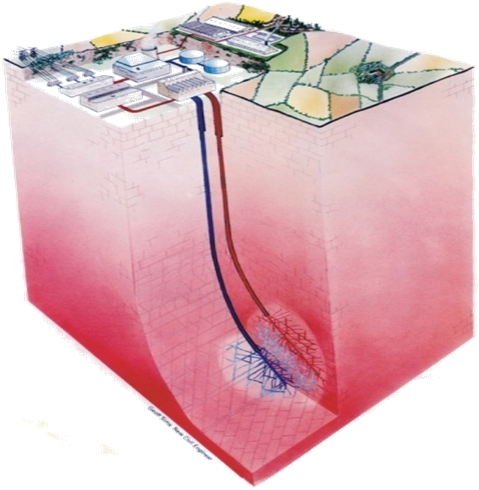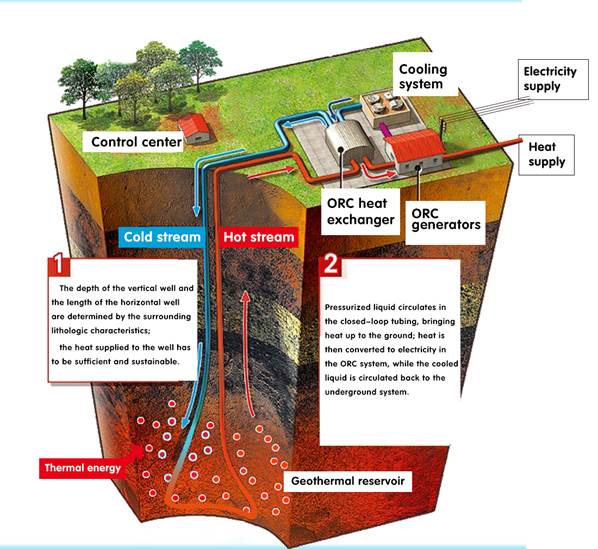Current Practice
Geothermal energy
Geothermal energy is not new. Thermal water resources have been used for centuries by humans to heat their homes and for their general wellbeing.
The earliest known use of geothermal resources for electricity generation was the Larderello generator in Pisa, Italy, in 1904.
In 1931, in an American scientific journal, Nikolai Tesla published an analytical article entitled “Our Future Motive Power”, in which he stated that electricity, generated on the basis of geothermal heat from deep within the Earth, can function as a reliable alternative for fossil-fuel powered engines.
Today, geothermal heat is obtained from drilling into underground thermal aquifers at a depth of between 500 and 4,000 meters (hydrothermal resources).
But the output of such hydrothermal resources is limited and heavily dependent upon the quality of the source.
Hot Dry rock
The most advanced technology available today is the Enhanced Geothermal System (EGS), also called Hot Dry Rock (HDR). In this system, two boreholes are drilled to a depth of approximately 4,000 meters.
Large quantities of cold water are injected through the first borehole in order to create an artificial underground reservoir.
By means of a method called “fracturing”, the crystalline rock formations between the two boreholes become porous or permeable, with the ultimate goal of pumping the heated water up through the second borehole, i.e. the production tube. The maximum temperature achieved by means of this so-called “doublet method” is approximately 180°C.
The thermal heat is then used for district heating as well as for industrial and agricultural purposes.
Doublet Methode
The doublet method (see illustration) has the following main disadvantages:
- Large quantities of injected water can result in unwanted underground landslides and erosion;
- In time, the permeable rock becomes chocked due to high mineral content (like in your kitchen kettle) and blocks the flow of water;
- The use of chemicals in order to stop underground mineralisation;
- Economic vulnerability due to a single production tube;
- Limited profitability as a result of production limits.
Chart of typical EDG installation: Doublet

Chart of prototype Chinese installation

Prototype
Recently, a prototype was developed in China on the basis of European technology, capable of overcoming doublet installation problems (see illustration).
Instead, two boreholes are used, which are fitted with a casing and connected to each other. The casing, in turn, is fitted with a special return pipe, containing a thermal fluid that absorbs and transfers thermal heat. This system partially removes the disadvantages of the doublet method. However, because there is still just a single production tube, the output capacity is limited to approximately 10MW per installation.
It is, therefore, a good solution for small-scale projects.